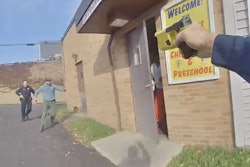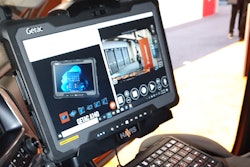On November 14, 2022, Officer Brandon Tsai of the Grand Prairie (TX) Police Department was tragically killed when his patrol vehicle struck a utility pole during a vehicle pursuit.
According to available reports, Tsai is the fourth law enforcement officer to have been killed in vehicle pursuits so far in 2022. Three officers died in this manner in 2021 and two in the year before that. In the previous decade (2010-2019) a total of 41 officers died in vehicle pursuits.
This column is dedicated to the memory of Officer Brandon Tsai, and written in hope for the healing for his family, friends, and fellow LEOs during this difficult time.
Changing Policy
Because vehicle pursuits are such high-liability events, some police agencies have instituted "no chase" policies due to the risks involved. Unfortunately, the outcome of this is to encourage people to drive away.
Some agencies have modified their pursuit policies to limit pursuits to violent felony suspects only. This is great, as long as the identity of the fleeing driver is known at the outset. However, as good as this looks on paper, in practice things get a little more complicated.
For example, it's pretty reasonable to conclude that the driver of a stolen vehicle has either already committed another crime (in addition to vehicle theft), and/or the commission of another crime is imminent (a drive-by shooting, for example). So, while we may not have intimate knowledge of the driver's identity, we probably have the three Graham factors:
- severity of crime at issue
- a potential immediate threat
- individual(s) resisting and/or evading arrest
Ultimately, the best policies are probably those that provide for officer discretion—and go/no-go authority—in weighing whether or not the need to apprehend the fleeing suspect outweigh the potential threat to public safety in a vehicle pursuit.
Using Technology
Some of the first devices and tactics used to stop vehicle pursuits—all of which are still in use at least to some extent today—require that an officer be positioned in very close proximity to the fleeing suspect. Spike strips are deployed across the road by officers who have positioned themselves alongside the roadway iat risk of the speeding traffic. "PIT" maneuvers are essentially controlled side-by-side vehicle collisions which can have unpredictable and oftentimes unfortunate results.
In recent years, a handful of new and emerging technologies have been introduced that help law enforcement either quickly end a pursuit, or avoid having to initiation one in the first place.
The Grappler Police Bumper is something of a deployable spider web consisting of tow-strap material with a 20,000-pound test strength that is extended on an armature mounted to the front of a police vehicle—essentially part of the push-bar. With the netting entangled in the wheel of the suspect vehicle, the pursuit quickly grinds to a halt.
The Mobilespike is also mounted at the front of the squad car in the push-bar and allows officers in pursuit to deflate the offending vehicle's tire without having to get out of their own car and put themselves in the path of several tons of speeding metal. The armature extends laterally outward from the left or right (depending on how it's mounted) and consists of telescoping metal tubes at the end of which is a cluster of blades and hollow quills engineered to puncture a tire without causing a blowout.
The Starchase vehicle-mounted GPS launcher and tracking system enables police to "launch" a GPS-enabled marker that adheres to the back of a fleeing vehicle. The data sent by the marker stuck to the offending vehicle sends positional data to a proprietary mapping platform. This interface—dubbed the CoreView Real-Time Mapping Portal—allows officers, investigators, and administrators to look at where the suspect vehicle is and plan a tactical approach once it has come to a stop.
Updating Training
These are all excellent technologies, but the most important element to any improvement in officer safety and success—specifically, mitigating the risks inherent in vehicle pursuits—is a constant commitment to expanding and enriching officer training.
Importantly, training in emergency vehicle operations—whether in a traditional squad car, on a police motorcycle, or involving a four-wheel-drive vehicle—has evolved rapidly in the past decade.
Forward-thinking agencies have recognized that advanced driving skills are perishable and therefore must be reinforced/retrained at regular intervals—rookies fresh from the recruit academy usually have excellent "stick and rudder" skills from recent work in a SkidCar, but those skills quickly evaporate as they ride "shotgun" for half or more of their first year on the streets.
Further, many agencies have embraced concepts that maximize the benefits of both traditional, in-car, closed-course EVOC driving that's tightly integrated into "classroom curriculum" utilizing scenario-based, decision-making training conducted in driving simulators. Taking a page from the training philosophies perfected and promoted in aviation, simulators have proven invaluable at increasing officers' cognitive processing speed, verbal communication skills, and overall mental readiness for these relatively low-frequency high-risk events.
In a 2008 study conducted by California Commission on Peace Officer Standards and Training (POST), researchers concluded that "blended training" emphasizing the use of both behind-the-wheel and simulators "produces the best training outcomes (performance in the field)" and that such training technologies "allow for situational training that cannot (safely) be undertaken in a 'real' setting."
Finally, because a significant number of police vehicle crashes during pursuits occur at night, some agencies have appropriately shifted some of their in-vehicle EVOC training to "after hours" schedules. Of course, this comes at a cost: nighttime training can mean overtime pay for trainers and trainees, as well as added safety accommodations to prevent accidents and injuries. But the return on those investments is virtually unmeasurable.
Making News
At times, police vehicle pursuits are concluded uneventfully, with only the participants—and those involved in any subsequent legal proceeding—even being aware of the incident occurring. However, altogether too many "car chases" become briefly infamous, either being transmitted live by circling news helicopters, or dutifully reported by doe-eyed news-readers during the evening broadcast.
Here's a small sample:
- Police Investigating Chase that Ended in Wrong-way Crash
- One Dead After Police Chase Crash In Dodge County
- Vehicle Pursuit Ends with Arrest in Iowa County
The best possible news of a vehicle pursuit—especially from the perspective of the police trainer and the administrators to whom they answer—is the incident for which there is no headline. The only report is the one written by the officer. The only thing that got broken was a traffic law and the only thing that got bruised was a motorist's pride.
For vehicle pursuits, no news is indeed good news—which, ironically, is newsworthy.
















